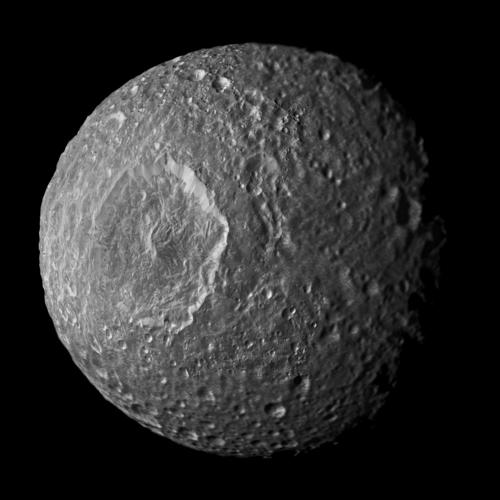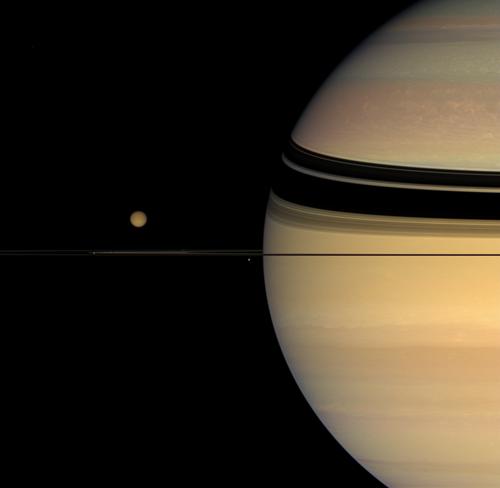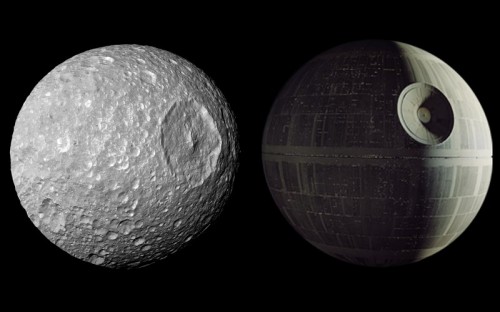
It wasn’t that long ago that Earth was thought to be the only place in the Solar System capable of having liquid water oceans, but now we know of several moons that do as well, including Europa and Enceladus, and likely Titan and Ganymede as well. In all these cases, the oceans are below ground, similar to ocean water below ice sheets at the Earth’s poles. Now there is yet another moon which might be added to this special list: Saturn’s moon Mimas.

Like those other moons, Mimas is very cold and icy on the surface, as might be expected in the outer Solar System. But also like the other moons, there may be something more happening underground, where more heat could be available. The evidence isn’t conclusive yet, but it seems to point to two interesting possibilities: either Mimas has a frozen core shaped like a football or it has a subsurface ocean.
Those conclusions come from a new study by scientists studying images of the moon taken by the Cassini spacecraft. They used the images to determine how much the moon “wobbles” in its orbit and found that Mimas wobbles about twice as much as expected. After considering several models to explain the observations, the scientists concluded that those two possibilities are the most likely, either a hidden ocean or a weirdly-shaped core.
“The data suggest that something is not right, so to speak, inside Mimas,” said Radwan Tajeddine, a Cassini research associate at Cornell University, Ithaca, N.Y., “The amount of wobble we measured is double what was predicted.” He is also the lead author on the new paper, published in the Oct. 17 issue of Science.
Unlike moons such as Europa and Enceladus, Mimas’ heavily cratered surface doesn’t really exhibit many features that would provide clues to what is happening down below. An ocean would be the most exciting explanation, since liquid water brings up the possibility of life of some kind. If Mimas just has an odd core though, that would also be interesting, since it would be a record of the moon’s formation, frozen in time, since scientists would expect that the core would normally have formed into a spherical shape over the past few billion years.

An effect called libration may provide the clues to understanding Mimas’ interior. The slight “wobble” in the moon’s orbit is caused by Mimas’ orbit being slightly stretched out instead of perfectly circular. Our own Moon does something similar.
“Observing libration can provide useful insights about what is going on inside a body,” said Tajeddine. “In this case, it is telling us that this cratered little moon may be more complex than we thought.”
But if Mimas does have an ocean, how did it form? Mimas is too small to maintain enough interior heat on its own, being only 246 miles (396 kilometers) in diameter. If, as evidence suggests, Mimas’ elongated orbit was even more so in the past, then there could have been enough tidal heating to maintain an ocean.
Further measurements from Cassini will be necessary to determine which of the proposed models for Mimas’ interior is correct. If it does turn out that there is liquid water inside Mimas, it will not only increase the number of known such moons in our Solar System, but could also indicate that such alien oceans may be common among similar icy moons in other solar systems as well. With the number of known exoplanets now in the thousands and estimated to be in the billions in our galaxy alone, there may indeed be many such “ocean moons” out there.
Want to keep up-to-date with all things space? Be sure to “Like” AmericaSpace on Facebook and follow us on Twitter: @AmericaSpace



